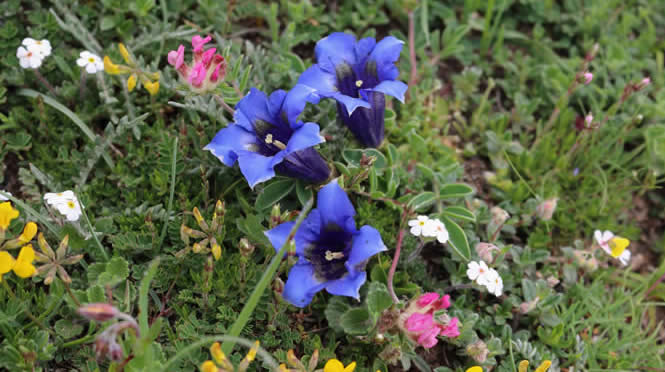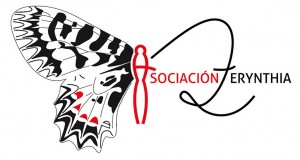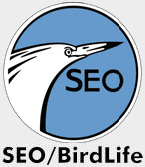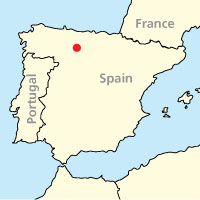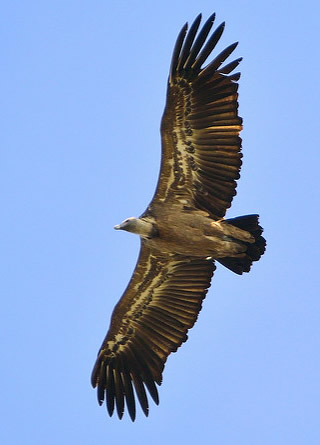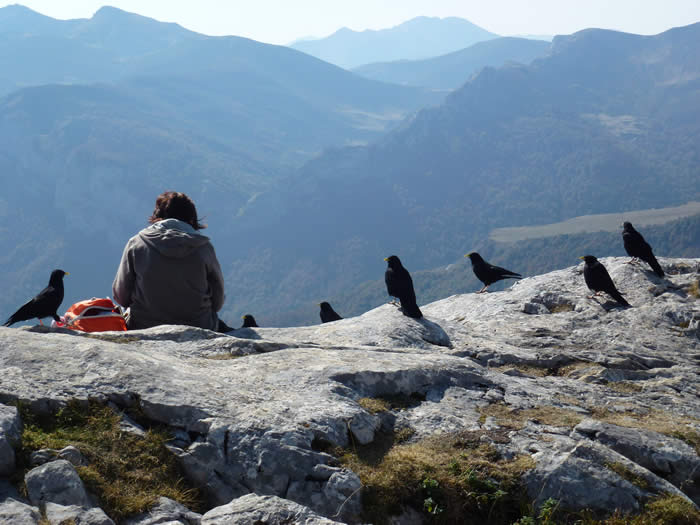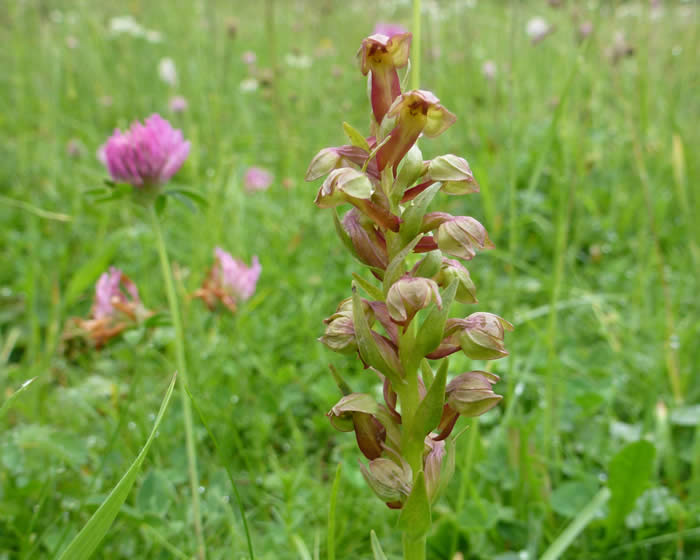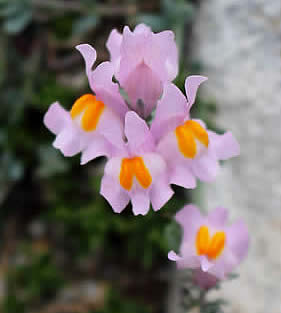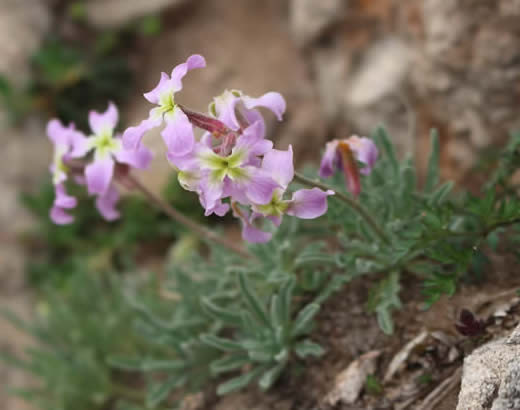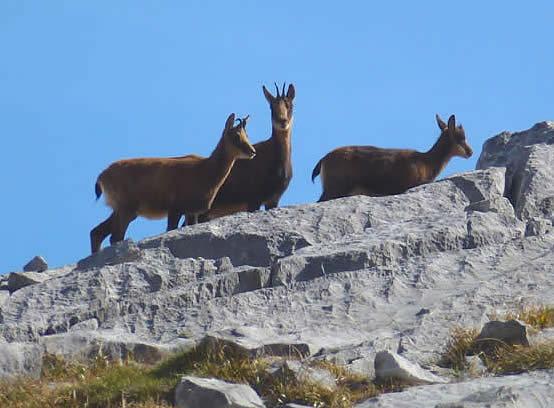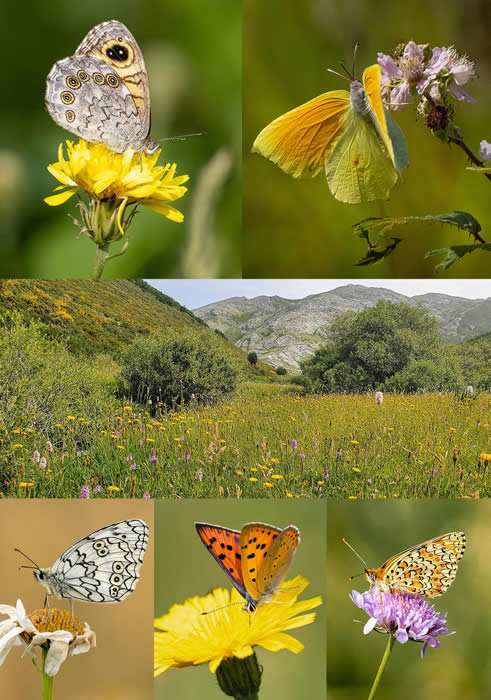Picos de Europa 7 — 14 June 2026
Mountain wildlife in stunning scenery
Imagine stepping back in time when meadows were full of flowers and butterflies, with traditional management for hay and livestock. Picture this with a backdrop of jagged limestone mountains and you have a feel for the glorious wildlife and landscape in this corner of northwest Spain.
Variety starts with the range of habitats, with a Mediterranean feel at lower levels to alpine rock-gardens, but dominated in between these by hay meadows known as some of the most diverse in Europe. Many of the 150 species of butterflies and 1500 plant species are strongly linked to the limestone, and high altitude acid peat bogs add to the variety.
Fuente Dé
Flowers
Orchids are often the first flowers studied – 20 species on Honeyguide’s previous Picos visits. These orchids include burnt-tip, frog, lizard, woodcock, two colour forms of elder-flowered orchid and the unusual Orchis langei. There is, of course, so much more: asphodels, rock-roses, pinks, saxifrages, globularias, gentians, large-flowered butterwort. the lovely ‘three-birds’ toadflax Linaria triornithophora – the list could go on.
A trumpet gentian Gentiana angustifolia subsp occidentalis plus supporting cast.
Maiden pink; cupidone (Cupid's dart).
Birds
Griffon vultures are the most numerous bird of prey, plus a few Egyptian vultures and an outside chance of seeing one of the reintroduced lammergeiers. Short-toed eagles are possible and black kites likely on most days. Higher areas have easy to see alpine choughs and a fair chance of finding alpine accentors, snowfinches and that most intriguing of birds, the wallcreeper.
Our home village of Boca de Huérgano has nesting white storks, abundant black redstarts, common redstart, rock sparrow, serins and Iberian green woodpecker plus dippers on the river. Rock bunting, red-backed and Iberian grey shrikes, crag martin, Bonelli’s warbler and bee-eater are more birds you wouldn’t expect to see in the UK. In 2019, Boca de Huérgano had a regular wryneck and the Iberian subspecies of pied flycatcher, though both were absent in 2022.
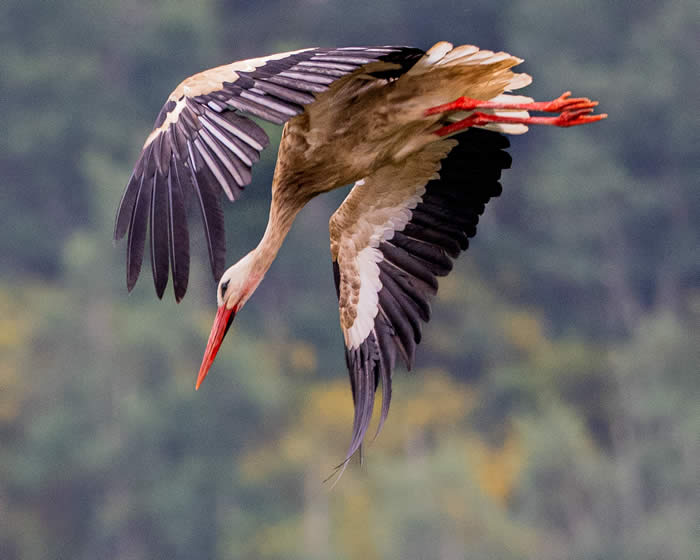
White stork descending to its nest (Graham Phillips); rock sparrow (David Bennett). Both in our base of Boca de Huérgano.
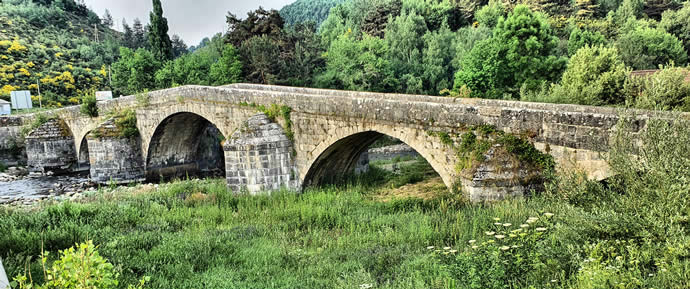
'Dipper bridge' in Boca de Huérgano (David Bennett).
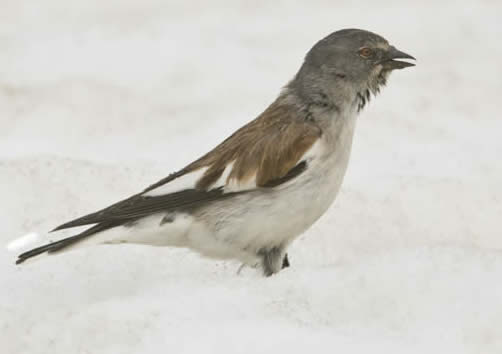
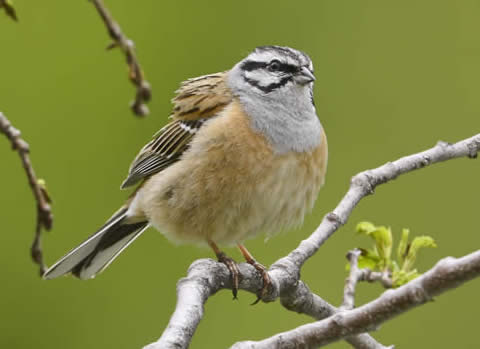
Snowfinch and rock bunting (Kevin Simmonds)
Butterflies and other insects
If you like butterflies, the Picos de Europa will appeal. Glanville, dark green and spotted are among the fritillaries. Chapman’s ringlet is found only in this area. There’s a good range of skippers, heaths, blues and others, given fine weather and a little patience. There’s a huge range of moths, day- and night-flying, for anyone with interest and expertise, plus various interesting looking beetles, spiders and more.
Spotted fritillary, Oberthur's grizzled skipper.
Other wildlife
The Cantabrian chamois Rupicapra pyrenaica parva is the local subspecies of the Pyrenean chamois or isard, and is widespread, though not common, in craggy areas. Brown bears are present in the Picos but secretive and we do not expect to see them. Midwife toads call in the village. Tree frog and wall lizards are likely.
Pretty towns, rushing mountain rivers and some of the finest scenery in Europe give a charming context for the wildlife.
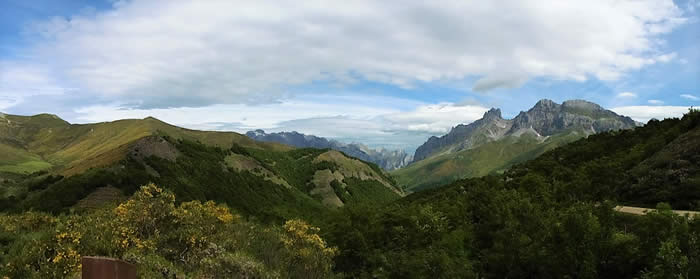
San Glorio pass
Holiday details
Our base is the Hotel Tierra de la Reina in the small town of Boca de Huérgano, where a Roman bridge over the River Esla is within walking distance. Excursions are a mix of local trips and drives to farther afield, including Puerto de las Señales mountain pass, Valle de Valdeón, a Spanish juniper forest, and by cable car to the high plateau at Fuente Dé.
Price: £1,800 per person in twin room for a full week (Sunday to Sunday).
Single room supplement: £130
En suite facilities
Flights: Scheduled Ryanair flights Stansted to Santander
07 June: FR2612 depart London Stansted 11:40 arrive Santander 14:40.
14 June: FR2613 depart Santander 15:05 arrive Stansted 15:55.
There is a railway station in Santander, and Santander can also be reached by ferry from the UK if there is anyone who prefers not to fly. See also Honeyguide holidays without flights. The airport is the rendezvous point.
Deposit: £400
Maximum number (probably one leader): 7
If there is a lot of interest in this holiday a second guide and minibus may be possible.
Leader
Pau Lucio lives near Valencia and runs a wildlife tour company Birdwatching Spain. Locally he is involved in conservation projects on bird migration and the importance of Spanish coastal wetlands for species such as the moustached and Savi’s warblers. He is our also guide in Valencia and La Mancha. Pau is very fond of the Picos de Europa and spends time here every year, with groups and with family.
Conservation project
Our main beneficiary is Asociación Zerynthia, a small Spanish NGO dedicated to the study and conservation of butterflies and the places where they live and to promoting public interest in them. A current project in northern Spain is habitat restoration to encourage white-letter hairstreaks, including planting disease resistant elms, the larval food plant. In some years we also contribute to SEO Santander (Spanish Ornithological Society / BirdLife Spain), which runs a coastal yet urban nature reserve in Santander. Some years we visit this on the way back to the airport, depending on flight times.
SUPPORTING
|
SUPPORTING |



